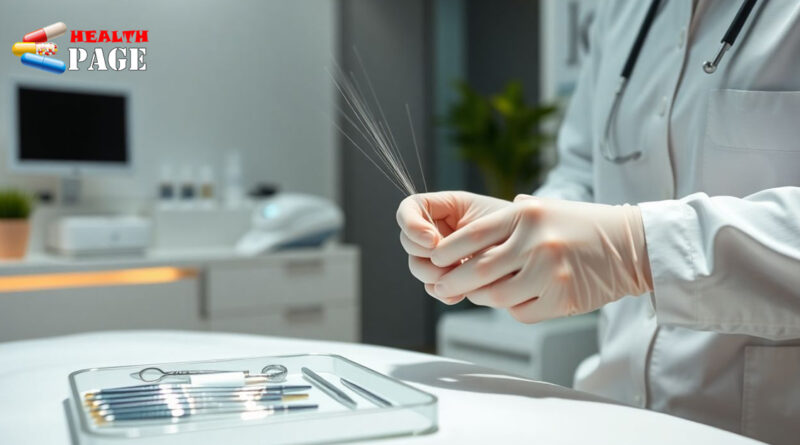What Are PDO Threads? The Ultimate Guide to Non-Surgical Facelift Technology
More people are turning to non-surgical ways to look younger. Instead of going under the knife, they want quick, safe, and natural results. One popular option is PDO threads—a popular treatment for tightening and lifting the skin. It’s a simple procedure with big benefits, attracting many who want a fresher look without downtime. This article aims to unpack everything about PDO threads—what they are, how they work, and whether they’re right for you.
What Are PDO Threads? An Overview of Non-Surgical Lifting Technology
PDO threads are a modern facelift tool that doesn’t need surgery. They came from techniques doctors use to sew wounds closed. Now, they help lift sagging skin and reduce wrinkles. As demand for less invasive options grows, PDO threads have become a top choice. People love that they can get noticeable results without long recovery times.
How Do PDO Threads Work? The Science Behind the Technology
Composition and Material of PDO Threads
PDO stands for Polydioxanone—a safe, biodegradable material used in medical stitches. Over time, the body naturally absorbs PDO threads. As they dissolve, they encourage your skin to produce more collagen, which keeps skin firm and smooth longer.
Mechanism of Action
The magic begins with the threads being inserted into key facial areas. They act like tiny support beams, lifting loose skin. As they stay in place, they help stretch the skin upwards. Meanwhile, the body reacts by making new collagen, which tightens the skin and boosts elasticity naturally. This dual action leaves you looking lifted and refreshed.
Duration and Effectiveness
You’ll notice an instant lift after the procedure. But the real benefits come gradually, as collagen builds up over the next few months. Most results last about a year or more, but individual factors like age and lifestyle influence how long the effects stay. Regular skincare keeps the skin healthy and enhances longevity.
Types of PDO Threads and Their Specific Uses
Mono Threads
These are smooth and lack barbs, mainly used for skin rejuvenation. They help improve skin texture and treat mild sagging. Areas like the forehead and cheeks are common spots for mono thread treatments.
Screw Threads
Screw threads are thicker and coiled. They provide better lifting support and stimulate collagen more deeply. They’re great for lifting the jawline or tightening around the chin.
Cog or Barbed Threads
These have tiny barbs that grip the skin tightly. They are perfect for lifts that need to be more dramatic—think lifting the cheeks or brow area. They anchor the skin and prevent sagging.
Comparative Summary
| Type | Purpose | Best For | Pros |
|---|---|---|---|
| Mono Threads | Skin smoothening | Rejuvenation, mild lifting | Minimal trauma, easy recovery |
| Screw Threads | Deeper support, collagen boost | Facial contours, jawline | Strong lift, collagen stimulation |
| Cog/Barbed | Significant lifting | Prominent sagging areas | Strong grip, visible lift |
The PDO Thread Procedure: What to Expect

Pre-Treatment Preparations
Before starting, you’ll have a consultation. The doctor checks your skin and discusses your goals. Avoid blood thinners and anti-inflammatory medicines a few days before to prevent bruising.
Step-by-Step Procedure
Most clinics use local anesthesia for comfort. The doctor inserts the threads using a fine needle or microcannula. Areas like the cheeks, jawline, or neck are common. The process takes about 30-60 minutes.
Post-Treatment Care
Afterward, expect some swelling or minor bruising. Avoid intense activity and touching the face for a few days. Applying ice can help reduce swelling. To boost your results, follow a good skincare routine and attend follow-up visits. If you notice unusual pain, swelling, or displacement, contact your provider right away.
Benefits and Risks of PDO Thread Treatments
Key Benefits
- No need for surgery or anesthesia
- Little downtime allows you to return to normal activities fast
- Results develop over time, looking natural
- Collagen boost improves skin quality and texture
Common Risks and Complications
- Mild swelling or bruising that usually resolves quickly
- Rarely, asymmetry or uneven lift
- Infection is possible if not done properly
- Thread migration or shifting can happen in some cases
Choosing a skilled, experienced doctor reduces these risks significantly. Always research and ask questions during your consultation.
Expert Opinions
Many dermatologists agree PDO threads are safe when done by trained professionals. They emphasize the importance of realistic expectations and proper technique for the best results.
Who Is an Ideal Candidate for PDO Threads?
Most healthy adults aged 30-60 are good candidates. Ideal candidates have mild to moderate skin laxity without significant sagging. If you’re seeking a subtle lift or skin tightening, PDO threads work well. Those with certain health conditions or pregnant women should avoid this treatment.
Before deciding, ask your provider about your skin condition and any medical history. Prepare questions like: “How many treatments will I need?” or “How long will results last?”
Conclusion: Is PDO Thread Treatment Right for You?
If you want a natural glow without surgery, PDO threads can be an excellent choice. They offer a quick, safe way to lift and tighten skin while boosting collagen. But always consult a qualified specialist to ensure the procedure matches your goals. This minimally invasive solution can truly change how you look—and how you feel. Why not schedule a consultation today to explore how PDO threads could be your next beauty upgrade?



Pingback: Constipation ICD 10: A Complete Guide to Accurate Medical Coding